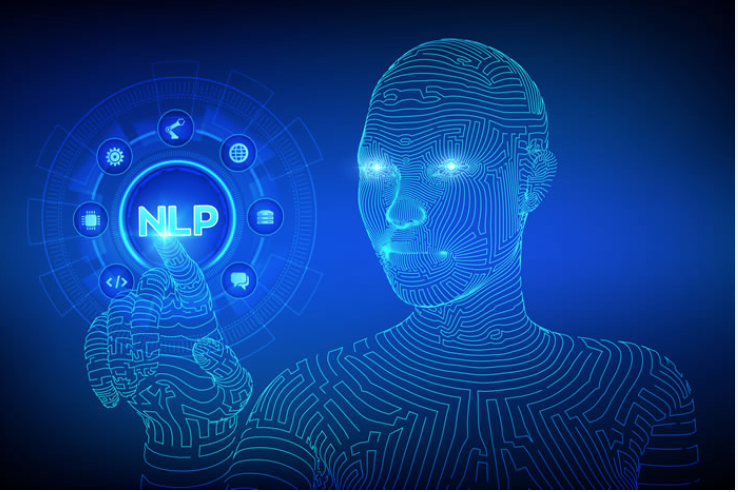- Table of Contents
- Introduction
- The Role of AI in Voice Technology for Businesses
- The Benefits of AI for Voice-Enabled Virtual Assistants
- How AI is Revolutionizing the Automotive Industry with Voice Technology
- The Challenges of Developing AI for Voice-Based Systems
- Exploring the Potential of AI-Powered Voice Interfaces
- The Impact of AI on Voice Recognition Technology in Healthcare Settings
- Conclusion
“Voice-driven AI: Unlocking the Power of Possibility”
Introduction
Voice technology powered by Artificial Intelligence (AI) has revolutionized the way people interact with machines. It has enabled machines to understand and respond to human commands, allowing for more natural and intuitive communication between humans and machines. AI-powered voice technology has advanced to the point where it can understand the context of conversations, recognize human emotions, and even generate personalized responses. It is used in a variety of applications, from virtual assistants to conversational agents, and is set to play an increasingly important role in the future of human-machine interaction.
The Role of AI in Voice Technology for Businesses
Artificial intelligence (AI) has become an integral part of voice technology for businesses. AI technology is used to provide better customer experiences, enhance customer engagement, and improve overall business productivity. Voice technology powered by AI has revolutionized the way businesses interact with customers, providing an efficient and cost-effective way to communicate.
AI technology can be used to power voice-activated assistants such as Siri and Alexa, which are becoming increasingly popular with businesses. Voice-activated assistants can be used to provide customer service, answer customer queries, and carry out routine tasks. These assistants can be programmed to recognize customer queries and respond with relevant information. This can help to reduce the workload for customer service representatives, allowing them to spend more time on more complex tasks.
AI can also be used to provide more personalized customer service. AI technology can analyze customer data, such as their past interactions with the company, to provide more tailored responses to customer queries. This can help to build customer loyalty and create a more positive customer experience.
AI technology can also be used to improve the accuracy of voice recognition. AI-powered voice recognition technology can recognize and understand natural language, allowing businesses to have more accurate and efficient conversations with customers.
Finally, AI technology can be used to analyze customer conversations. AI-powered analytics can be used to analyze customer conversations and identify trends, allowing businesses to gain valuable insights into customer behavior and preferences. This information can be used to improve customer service and develop more targeted marketing campaigns.
In conclusion, AI technology is a powerful tool for businesses that want to improve their customer service and engage with customers in a more efficient and cost-effective way. AI-powered voice technology can provide more personalized customer experiences, improve accuracy of voice recognition, and provide valuable insights into customer behavior.
The Benefits of AI for Voice-Enabled Virtual Assistants
Voice-enabled virtual assistants are becoming an increasingly popular way to interact with technology. Artificial Intelligence (AI) is playing a major role in the development of these virtual assistants, enabling them to respond to voice commands, understand user intent, and provide more accurate and personalized responses. The use of AI in this setting can provide numerous benefits, including improved accuracy, enhanced customer service, and better user engagement.
First and foremost, AI can help to improve the accuracy of the virtual assistant’s responses. AI technology is able to learn from the user’s interactions with the virtual assistant and can use this data to provide more accurate responses. This improved accuracy can result in increased user satisfaction and better user engagement.
In addition, AI can help to enhance customer service. By learning from customer interactions, the virtual assistant can provide personalized responses that are tailored to the individual’s needs. This can result in a more positive customer experience, as well as increased customer loyalty.
Finally, AI can help to improve user engagement. AI can be used to identify customer issues and can provide helpful insights on how to address them. This can result in a more interactive experience, which in turn can lead to increased customer satisfaction and better customer retention.
Overall, AI can be a powerful tool for voice-enabled virtual assistants. By improving accuracy and providing personalized customer service, AI can help to improve user engagement and provide a better overall customer experience. As such, it is an invaluable asset to the development of these virtual assistants and will continue to play an important role in their evolution.
How AI is Revolutionizing the Automotive Industry with Voice Technology
The automotive industry has been revolutionized by artificial intelligence (AI) and voice technology. This technology has enabled cars to become smarter and more intuitive, delivering an enhanced user experience.
Voice technology is a type of AI that enables cars to respond to voice commands. By using voice commands, drivers can easily access features and information such as directions, music, climate control, and more. This technology makes it possible to control the car with your voice and to access information quickly and easily.
Voice technology has enabled cars to become more responsive and customizable. This has improved the user experience significantly and enabled drivers to access information or features without having to take their hands off the wheel. It has also enabled cars to provide drivers with personalized recommendations based on their past preferences.
Voice technology has also made driving safer. By using voice commands, drivers can keep their hands on the wheel and their eyes on the road, reducing the risk of accidents. Additionally, voice-activated technology can be used to detect when a driver is distracted or impaired, helping to prevent accidents.
The automotive industry continues to benefit from the advancements in voice technology. As the technology continues to evolve, cars will become even smarter and more intuitive. This will enable drivers to have an even more enjoyable and safe driving experience.
The Challenges of Developing AI for Voice-Based Systems
The development of artificial intelligence (AI) for voice-based systems presents a number of unique challenges for developers. Voice-based AI systems are designed to interact with people using natural language, which requires significant advancements in language understanding, natural language processing, and speech recognition. Additionally, AI systems must be able to interpret and respond to complex inputs in order to provide meaningful dialogue.
The development of natural language processing (NLP) is one of the most challenging aspects of AI development for voice-based systems. NLP is the ability of a computer program to understand and interpret natural language. In order to do this, AI systems must be able to accurately interpret the intent and meaning of a user’s input and respond with appropriate, natural language. This requires the development of algorithms that can identify the context of a user’s input and respond with appropriate, natural language.
Another challenge facing developers of AI for voice-based systems is speech recognition. This requires the ability to accurately recognize and interpret speech from a user. This requires complex algorithms that can distinguish between different accents, dialects, and speech patterns. Additionally, AI systems must be able to recognize and respond to background noise, background music, and other noise sources.
Finally, AI for voice-based systems must be able to understand the intent of a user’s input and respond appropriately. This requires the development of algorithms that can interpret the context of a user’s input and respond with meaningful responses. Additionally, AI systems must be able to recognize and respond to nuances in language, such as sarcasm or irony.
In sum, the development of AI for voice-based systems presents a number of challenges for developers. These challenges include the development of natural language processing, speech recognition, and the ability to understand the intent of a user’s input and respond with meaningful responses. However, with the continued advancements in AI technology, these challenges can be overcome and AI for voice-based systems can become increasingly more sophisticated.
Exploring the Potential of AI-Powered Voice Interfaces
The potential of artificial intelligence (AI)-powered voice interfaces has become increasingly apparent in recent years, with a wide range of applications that are changing the way we interact with technology. From voice-activated home assistants to interactive chatbots, AI-powered voice interfaces are revolutionizing the way people access information and services.
The potential of AI-powered voice interfaces lies in their ability to understand natural language, allowing users to interact with technology in a more intuitive and conversational manner. This makes them ideal for use in a wide range of scenarios, including customer service, healthcare, and home automation. AI-powered voice interfaces can provide users with a more personalized experience, as they are able to process a wide range of natural language requests.
The use of AI-powered voice interfaces can also reduce the need for manual input, as the technology can autonomously process requests and provide information and services without the need for user intervention. This can significantly reduce the amount of time and resources needed to complete tasks, making AI-powered voice interfaces an attractive option for businesses and organizations.
AI-powered voice interfaces are also becoming increasingly accurate and reliable, with the technology continuing to improve with the use of machine learning techniques. This is making AI-powered voice interfaces increasingly popular for use in a variety of applications, as they can provide a more natural and efficient user experience.
In conclusion, AI-powered voice interfaces have the potential to significantly improve the way we interact with technology, providing users with a more natural and intuitive experience. This technology is becoming increasingly accurate and reliable, making it an attractive option for businesses and organizations. As the technology continues to improve, we can expect to see AI-powered voice interfaces becoming a commonplace feature in the near future.
The Impact of AI on Voice Recognition Technology in Healthcare Settings
The impact of Artificial Intelligence (AI) on voice recognition technology in healthcare settings is a revolutionary development that has the potential to revolutionize the way that healthcare is delivered. AI technology has the potential to improve accuracy, reduce costs, and increase efficiency in healthcare settings.
Voice recognition technology is a type of AI technology that can be used to interpret and understand spoken language. This technology is used in healthcare settings to automate tasks and processes such as transcription and data entry. AI-driven voice recognition technology can analyze speech patterns and interpret them accurately, reducing the need for manual transcription and data entry.
AI-driven voice recognition technology can also be used to improve the accuracy of medical diagnoses. AI-driven voice recognition technology can analyze patient speech patterns and detect subtle changes in pitch, tone, and inflection. This can provide valuable insight into a patient’s health and allow healthcare providers to make more accurate diagnoses and treatment plans.
In addition, AI-driven voice recognition technology can be used to automate administrative tasks such as appointment scheduling, billing, and record keeping. AI-driven voice recognition technology can quickly process and interpret spoken commands, allowing healthcare providers to streamline administrative tasks and provide better patient care.
Finally, AI-driven voice recognition technology can be used to facilitate patient-provider communication. AI-driven voice recognition technology can interpret and respond to spoken questions and commands, making it easier for healthcare providers to communicate with their patients. This can lead to improved patient satisfaction and better overall healthcare outcomes.
In conclusion, AI-driven voice recognition technology has the potential to revolutionize healthcare by improving accuracy, reducing costs, and increasing efficiency. Healthcare providers should consider investing in this technology to take advantage of its many benefits.
Conclusion
In conclusion, AI in voice technology has the potential to revolutionize how we interact with computers, devices, and services. As AI technology continues to progress and become more advanced, voice technology is expected to become more and more prevalent in our everyday lives. It will be interesting to see how AI in voice technology continues to evolve and how it will be incorporated into more aspects of our lives in the future.


